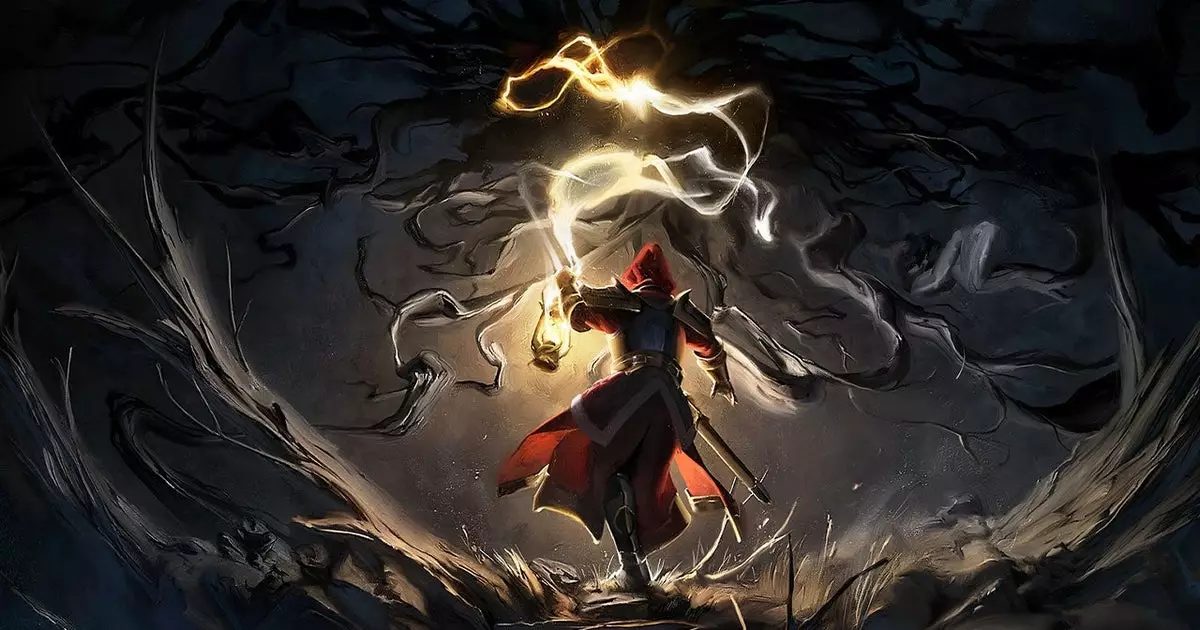From my first encounter with “Mandragora: Whispers Of The Witch Tree,” my gut instinct was to approach it with skepticism. Was this just another entry in the cluttered world of dark fantasy side-scrollers? With visuals reminiscent of something that emerged from a gothic fairy tale and gameplay elements lifting cues from notable titles like Castlevania, it was challenging to believe that this game could rise above the crowded genre. The involvement of prominent writers, like Brian Mitsoda from Vampire: The Masquerade – Bloodlines, initially piqued my interest, yet I wondered if the substance would prevail over style.
As time wore on, a wave of enthusiastic players began commenting on their experiences with the demo, dubbing it a hidden gem. Their excitement reignited my curiosity. I finally immersed myself in the full build, and much to my surprise, I began to see the brilliance hidden beneath the surface. The key to its charm lies not merely in its mechanics or aesthetics but in the rich narrative that envelops players from the very beginning.
Setting the Stage: A Narrative-Driven Experience
The world of Mandragora is a grim yet engrossing one, constructed on a foundation of compelling lore. Players find themselves embroiled in an apocalyptic setting where a notably sinister figure, the King Priest, rules the dismal Crimson City. Inspired visually by Disney’s Judge Claude Frollo, this antagonistic character embodies a dark fanaticism towards hunting witches, adding a layer of moral complexity to the unfolding story.
Our protagonist, an inquisitor trapped in a web of otherworldly influence, is drafted into a relentless hunt for witches while grappling with the repercussions of their choices. After mercy-killing a witch in a moment soaked in tragedy, they unknowingly inherit a mysterious power, instantly raising the stakes. This engaging storyline serves as the backbone of the entire experience, drawing players deeper into conversations with intricately voiced NPCs and rich characterization. Unlike most games that prioritize combat or exploration, Mandragora revels in its story—a commendable decision that sets it apart in a saturated gaming market.
The Dance of Gameplay Mechanics
Moving beyond the compelling narrative, Mandragora offers a diverse array of game mechanics, striking an enjoyable balance between action-RPG elements and environmental storytelling. With classic side-scrolling mechanics and a hint of a contemporary craftable flair, it becomes evident that much thought was placed into the game design. Players navigate a beautifully rendered world rich with picturesque scenery, secret passages, and tantalizing loot, reminiscent of beloved titles like Dark Souls, yet with a unique charm all its own.
The combat system functions on a rhythmic dance of evasion and stamina management; players must adeptly weave between enemy attacks while executing their own strategies—a satisfying challenge for seasoned gamers. While the animations can sometimes feel disjointed, the visceral nature of the gameplay keeps players engaged.
The diverse arsenal available, including primary weapons and auxiliary skills, allows for player creativity and adaptability in combat. This engagement presents a canvas for diverse playstyles. Will players favor brute force or clever maneuvering?
Visuals: An Artistic Triumph or a Quirky Quibble?
Visually, Mandragora boasts a distinct and stylized aesthetic that may polarize opinions. The character portraits, often drawn from a surreal and somewhat grotesque tradition, breathe life into a world that feels vividly alive. While some players may criticize these designs, they impart an indescribable character and personality to the game. For me, this unconventional approach to visual storytelling serves as a strength, complementing the chaos and intrigue inherent in the narrative.
The environmental design—speaking volumes through its landscapes—evokes a hauntingly beautiful atmosphere that intertwines seamlessly with the unfolding lore. Each setting feels substantial, as if it were a character in its own right that contributes significantly to the overarching story.
In this age of cookie-cutter games, where experiences can often feel derivative, Mandragora distinguishes itself not just through its mechanics and design, but through narrative ambition. It dares to weave storytelling into every facet of gameplay while crafting an intricate world layered with secrets, lore, and vibrant encounters. It is this ambition that ultimately positions Mandragora as a title worth celebrating amidst today’s gaming landscape, challenging players to reflect on their interactions and the paths they forge within this captivating universe.


Leave a Reply